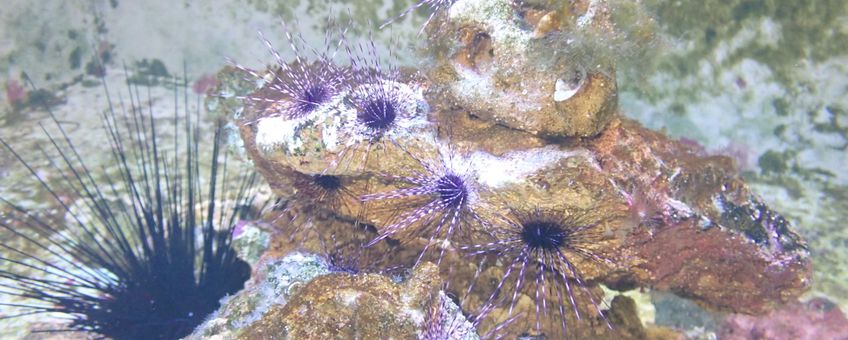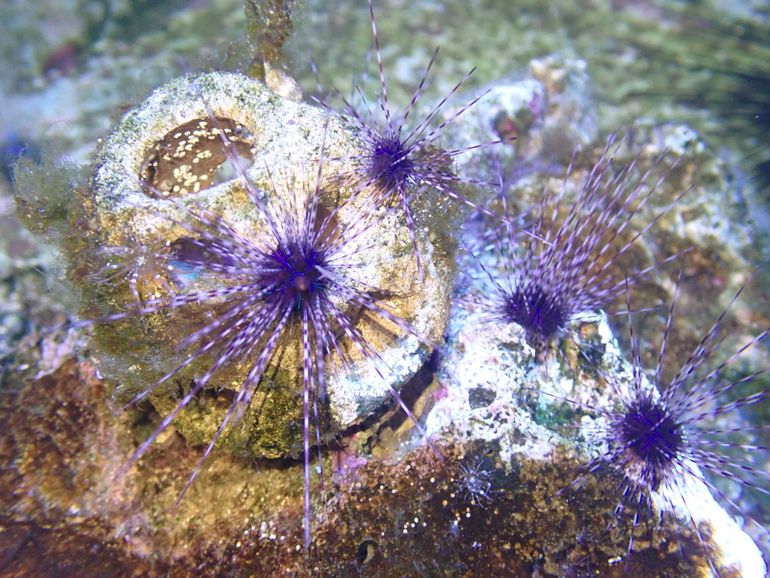
Tropical sea urchins cultivated for restoration Caribbean coral reefs
Dutch Caribbean Nature Alliance (DCNA), Van Hall LarensteinThe sea urchins Diadema antillarum were the main grazers of Caribbean coral reefs until over 95 percent of the sea urchins were killed by an unknown disease in 1983. Without sea urchins grazing, algae became the dominant group on the coral reef, outcompeting coral. Today, nearly forty years after their mass death, sea urchins have still not recovered. Van Hall Larenstein University of Applied Sciences (VHL) is working with the RAAK PRO Diadema project (2019-2023) along with project partners for the restoration of this species on Saba and Sint Eustatius (Caribbean Netherlands).
Long awaited breeding method
For the past forty years, researchers have been trying to breed Diadema in captivity, but unfortunately have only had limited success. Breeding has been found to be very difficult. Larvae of this type of sea urchin float along sea currents for the first fifty days of their life and are sensitive to water quality and nutrient availability. However, in 2020 researchers and students from VHL in Leeuwarden managed to develop a method for stable and consistent breeding of young Diadema.
Rotterdam Zoo
It is difficult to transport these animals on a large scale to Saba or Sint Eustatius, so the first group of young urchins found a nice new home in the Rotterdam Zoo on March 24th. The next step will be to breed urchins on Saba so that they can be released into the wild, strengthening the populations and helping to restore the coral reef.
Sea urchins in marine lab in Leeuwarden (Source: VHL)
More information
- VHL website
- Follow the project on Facebook for updates
Text: Alwin Hylkema, VHL and Dutch Caribbean Nature Alliance
Photos: Tom Wijers
Film: VHL

